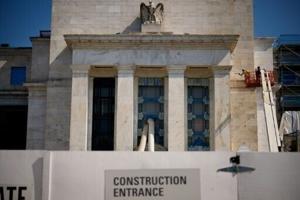In a pivotal decision that underscored its independence amidst intense political scrutiny, the Federal Reserve recently announced its resolve to maintain current interest rates. This firm stance came despite persistent and vocal pressure from President Donald Trump, who has consistently advocated for significant borrowing cost reductions to stimulate the economy. The central bank’s unwavering position sets the stage for an intriguing period of economic and political dynamics.
The Federal Reserve opted to keep its benchmark interest rates within a specific range of 4.25 percent to 4.50 percent. This critical choice was made against a backdrop of varied economic indicators. While some data pointed to a return to growth in the second quarter for the US economy, deeper analysis revealed that this uptick was significantly influenced by businesses rapidly stockpiling inventory. This strategic move was largely a pre-emptive measure against the potential tariffs that President Trump had threatened to impose.
Moreover, the policymakers at the Federal Reserve were acutely aware of the imminent implementation of new tariff rates, which President Trump had announced would take effect shortly after their decision. These considerations highlight the complex interplay between trade policy and monetary policy, as the central bank navigates external pressures while striving for economic stability. The Fed’s official statement acknowledged these complexities, noting that “Although swings in net exports continue to affect the data, recent indicators suggest that growth of economic activity moderated in the first half of the year.”
Significantly, the decision was not unanimous, with two influential members, Federal Reserve governors Christopher Waller and Michelle Bowman, casting dissenting votes. Both governors had previously indicated their openness to an earlier interest rate cut, aligning more closely with the sentiment for more aggressive economic stimulus. Their dissent underscores the internal debates and differing philosophies within the committee responsible for the nation’s monetary policy.
While disagreements within the rate-setting Federal Open Market Committee are not uncommon, the nature of these dissents marks a notable historical moment. Analysts have pointed out that this instance represents the first time since the 1990s that two governors have formally dissented from a major policy decision. This level of internal division highlights the challenging economic landscape and the differing views on the optimal path for the US economy moving forward.
The outcome, maintaining unchanged interest rates, was predictably met with strong disapproval from Donald Trump. The President has repeatedly and vociferously criticized the independent Federal Reserve chair, deriding him with terms such as “too late,” a “numbskull,” and “moron” for not accelerating rate reductions. These public broadsides reflect a deep-seated frustration with the central bank’s autonomy and its impact on his economic agenda.
The consistent and aggressive attacks from Donald Trump have fueled considerable speculation regarding the future of the Federal Reserve’s leadership. Observers ponder whether the President might attempt to dismiss the current chair or apply pressure for an early resignation, potentially compromising the institution’s critical independence. This ongoing tension between the executive branch and the central bank remains a key factor in the broader economic and political narrative, shaping expectations for future monetary policy decisions and the stability of the US economy.





Leave a Reply